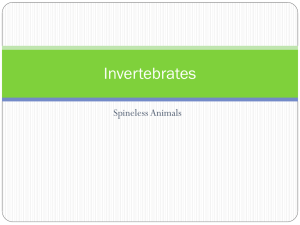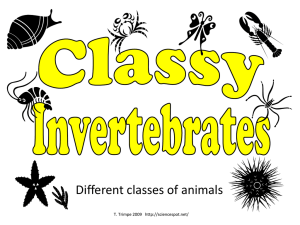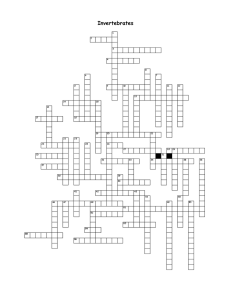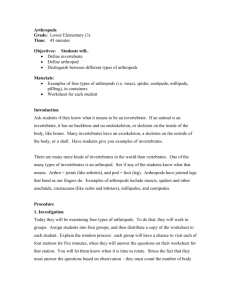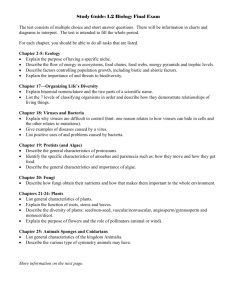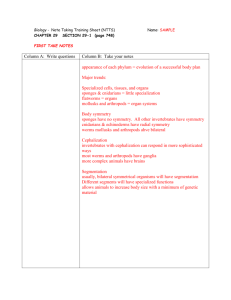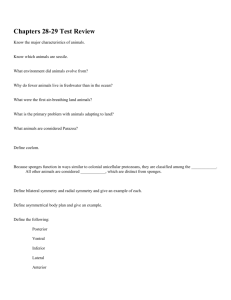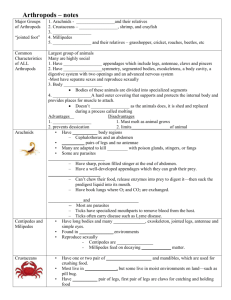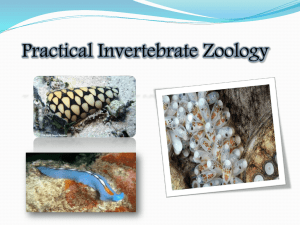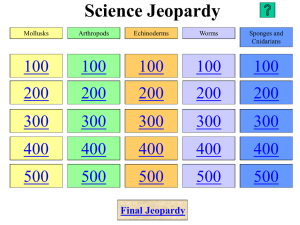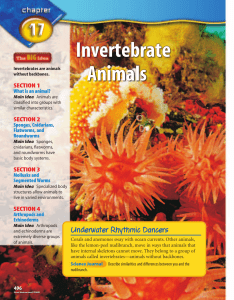Invertebrates 1 copyright cmassengale
advertisement
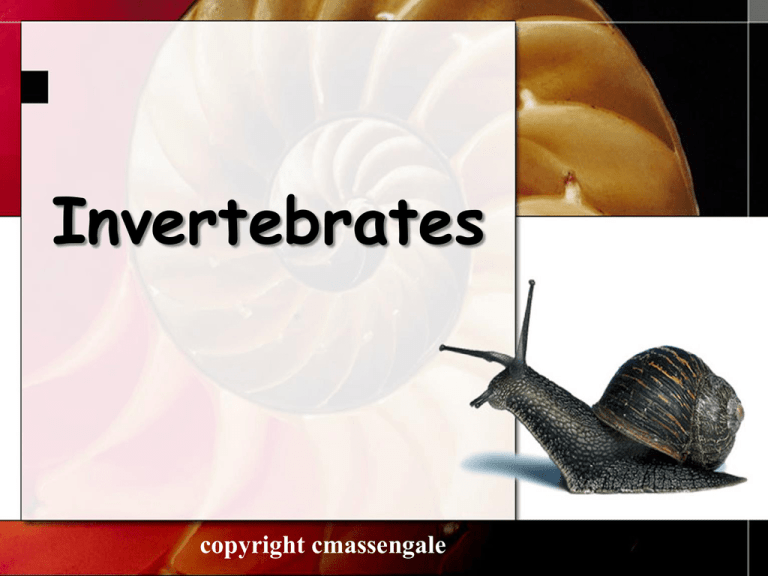
Invertebrates copyright cmassengale 1 Invertebrate Phyla • • • • • • • • Sponges Cnidarians Platyhelminthes Nematodes Mollusks Annelids Echinoderms Arthropods 2 Sponges (Porifera) • Most primitive • Cells relatively independent • Mostly marine • No Symmetry 3 Sponges • No mouth, stomachs, or other organs • Most live in oceans • Cannot move • They stink a lot Cnidarians • Mostly marine • Radial Symmetry 5 Cnidarians • Jellyfish • Hydra • Coral •Sea anemone •Portuguese Man-O-War 6 Invertebrates with Stinging Cells jellyfish Sea anemone • They have tentacles • They have a mouth • They live on the ocean floor • They shoot poisonous darts coral Platyhelminthes • Flatworms • Bilateral symmetry • Cephalization 8 Planarian – freshwater flatworm 9 Nematodes • Tube-like digestive tract • Roundworms! • Mouth and anus • No segmentation 10 Worms • They can grow back parts if they lose parts. • Some worms can grow to 30 METERS long • An earthworm has hairs on it to help it go through the dirt!!! Flatworm Roundworms Segmented Mollusks • Clams, snails, squids • Varied habitats – Marine – Freshwater – Terrestrial 12 Invertebrates with Soft Bodies • They live on land and fresh water and ocean water. • They make shells from minerals in the water • Two shelled mollusks has a big foot to pull itself along octopus snail squid Annelids • Segmented worms • Common earthworm • Leech 14 Echinoderms • Always marine • Starfishes, sea urchins, sea lilies • Spiny skin 15 Invertebrates with Spiny Skins • They have bodies with at least 5 sections • They have suction cup feet to walk • They use tubes to catch food to. Brittle Star – An Echinoderm 17 Arthropods • Joint-legged animals • External skeleton • Huge variation – mostly insects 18 Arthropods There are 4 groups Arthopods • They have keen sense organs • They have exoskeletons. • They have two or more segments Crustaceans • They have five pairs of legs • They live near or on the ocean floor • Live on land and water • They have antennae Arachnids • Spiders mites and ticks. • 4 pairs of legs • Most live on land. • Some live in fresh water • They are called parasites. Insects • Largest group of arthropods • 3 pairs of legs • 3 main body part sections • 2 pairs of eyes • Have mouths Millipedes & Centipedes • Many body segments • Live under rocks & dark places • Really have less than 100 legs • Protects itself by curling up • Millipedes have 4 legs on each segment • Centipedes have 2 legs on each segment millipede centipede 25
